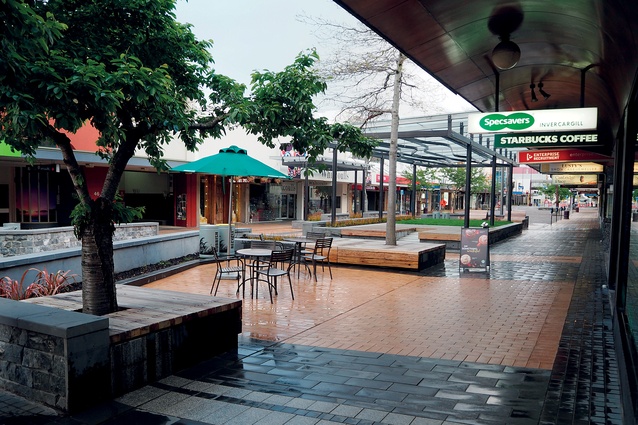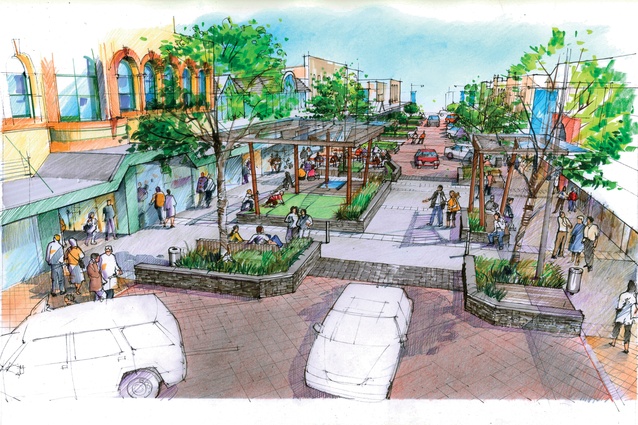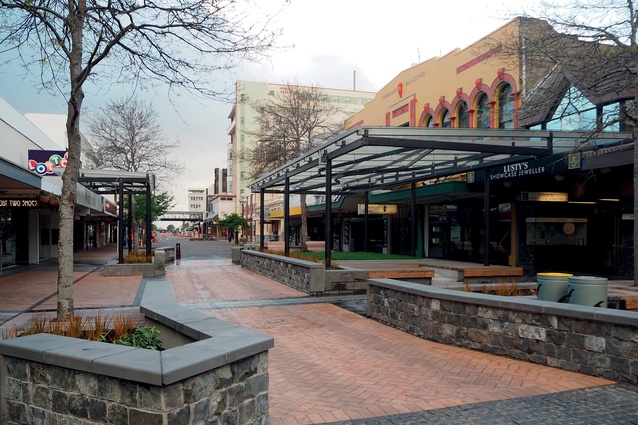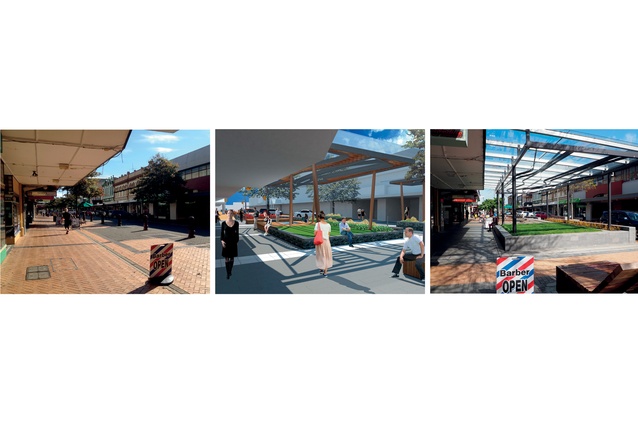Invercargill revives
Two urban rejuvenation projects have injected new life into Invercargill, but the ways they developed were very different. Landscape architect, Craig Pocock and his company Pocock Design Environment had done the structured plan and master plan for Invercargill’s CBD. Then, South Alive – a grass-roots group based in South City, five kilometres from the CBD – approached Pocock. They asked him to run stakeholder workshops and create a neighbourhood master plan that went beyond the typical street upgrade. The South City project was very much community driven.
The regeneration of the Invercargill CBD was more traditional in that it was a Council-led project. Council wanted “to freshen up the public realm, encourage property owners to reinvest in their buildings, add amenity, create more vibrant spaces and attract people back into the CBD, which they felt was floundering,” Pocock says. “We held consultation workshops, talked to hundreds of people and held dozens of community meetings with a number of interest groups ranging from local music groups to the police, local property and retail.”
While the CBD streetscape had been upgraded 20 years ago, it needed an edit. A full-scale re-design would be prohibitively expensive, and unsustainable due to the the large carbon footprint incurred by urban rejuvenation. But there was a huge need for improved street amenities – places to sit and meet, improved shelter and lighting, and more trees and colour to soften and brighten the somewhat pervasive grey.

As part of the first stage, a raised, glass-covered ‘living room’ in Esk Street, with a white granite water feature, now creates a meeting space; as do pocket parks and paved, enclosed cafe spaces. Integrated landscape lighting glows under decking, in street furniture and within the central meeting area. The computer-controlled lighting changes dynamically through the colour spectrum as pedestrians walk up the street and is suggestive of the Aurora Australis, which lights the Invercargill skies. The visual effect encourages nighttime use and adds a unique element to the streetscape.
A narrowed carriageway makes Esk Street more pedestrian-friendly and slows down traffic. Steel screens bordering two paved eating areas shield al fresco diners from traffic. “[The screens] were to encourage eateries to engage in the public space by giving them a highly functional place to set up tables. The eating areas are sheltered; even on a windy day, when the sun is shining, the spaces are attractive and usable.”
A range of seating and microclimates are intended to appeal to the city’s entire demographic.
During the community consultation Pocock found that Southlanders’ “sense of place” is more located in the environment, rather than the history – the sweeping, dramatic coastlines and weather; the fertile, productive land. “It’s the drama of the landscape that they have to comply with, more so than the cultural history of the place. The materials, textures and colours we used are focused on representing the crazy, windswept, coastal environment that Invercargill occupies.”
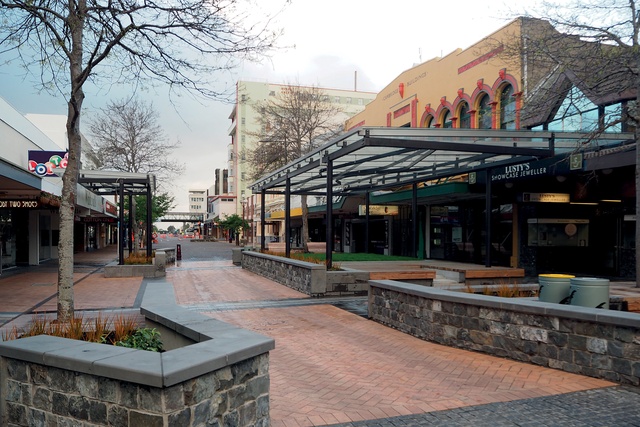
Locally sourced materials include granite stonewalls and all the timber – some of which is recycled Australian hardwood. Taken from old bridges, it gives instant patina and atmosphere.
Parallel to, and independent of, the CBD project, Pocock designed the streetscape of South Invercargill, situated on a rise at the gateway to the Catlins. The predominantly blue-collar inhabitants were discouraged by the quality of the buildings and environment, and the type of retail they were getting, Pocock says, and the main street had little amenity or visual appeal.
“There was a mall and supermarket, and a dozen or so takeaways, and some small, low-value, retail shops. It had become rundown. The community was discouraged by how the environment looked – how it reflected on them as a community; and, more importantly, how it was perceived by outsiders. They felt they were hard-working people who deserved better environments, amenities and community spaces in which to meet – spaces that accurately reflected the spirit of their community.”
Through a series of workshops and public meetings that Pocock and South Alive convened, local people identified priorities to rejuvenate South Invercargill – to make it look and function better, and build community pride, participation, identity and resourcefulness. They formed teams and cleaned up streets and people’s gardens; planted fruit and nut trees; a local contractor removed tonnes of steel, concrete, rubbish and a burnt-out house from a derelict site.
The site designated for retail development temporarily became a park, with a stage for meetings and performances. The community liked the park so much it became permanent. Pocock captured these ideas and initiatives in a community master plan.
Following the community master plan stage, Design Environment was commissioned to develop a streetscape design. The plan delineated paved footpaths and created pocket parks. Lighting was updated, including a light gateway in which panels set atop 10m-high light poles emit a glow, reminiscent of the Aurora Australis. As the project advanced, occupancy of the shops changed.
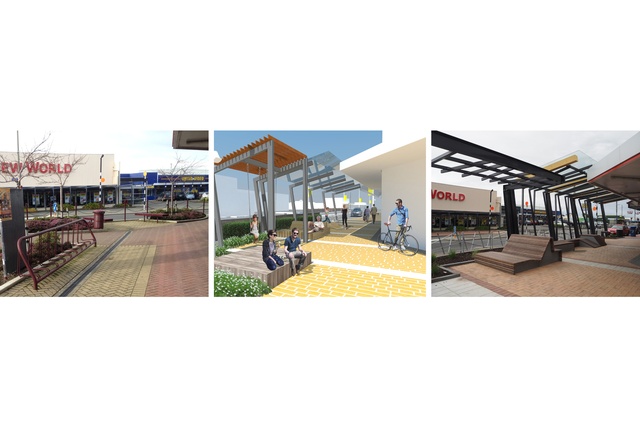
“Hairdressers, a pharmacy and food shops gradually replaced some of the anti-social retail and there is now no vacant retail space. We brought in modern lighting, paved footpaths, created two pocket parks in micro-climates where people can get out of the wind and catch the north west sun, created spaces in which to play and sit, and little stages so community groups could meet there.
We increased the usable all weather street space by creating shelters that look like the iconic wind swept trees of the Southland coastline. Together with the verandas of the existing buildings that made a large, all-weather community space.”
Funded by a generous $123,000 donation, Tale of Southland - Murihiku, a whale tail sculpture by David Trubridge, whose design won a nationwide competition, now graces the main entrance to Russell Square.

